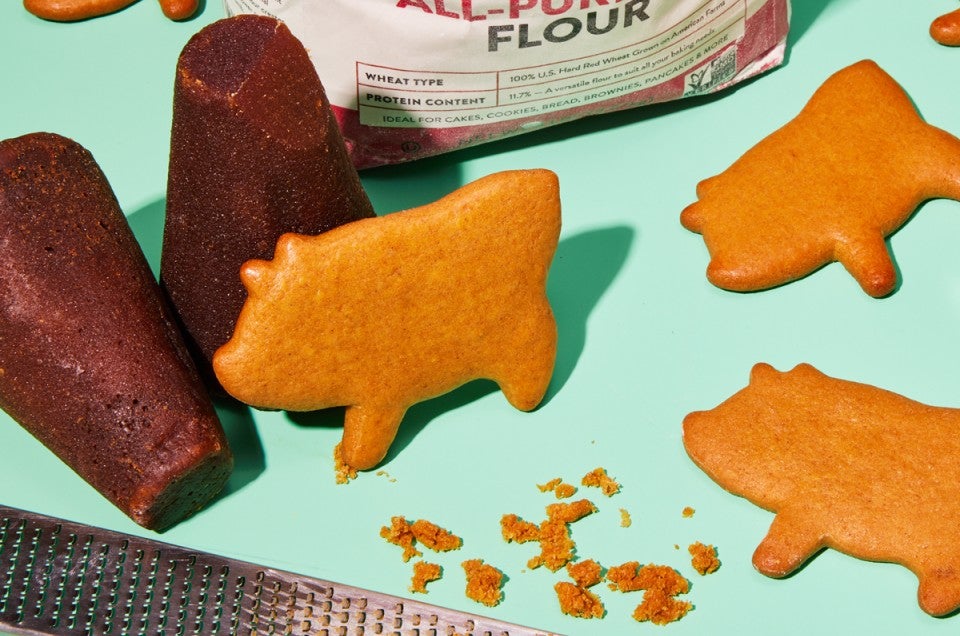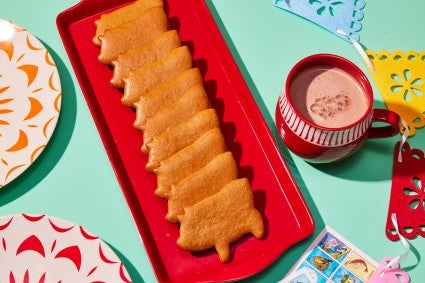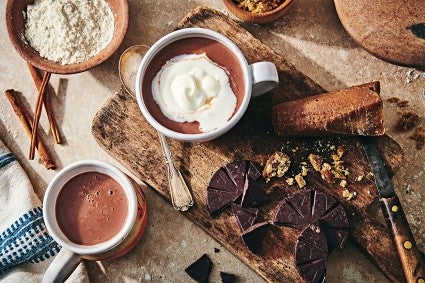What is piloncillo? This sweetener makes great cookies, pan dulce, and more
Use this traditional Mexican unrefined sugar for a dash of flavor and history.


This article is part of our feature celebrating Pan Dulce. Find all things pan dulce here.
Piloncillo (as it’s commonly referred to in Mexico) or panela, rapadura, and chanaca in greater Latin America, is a conical-shaped sugar “cube” beloved for its smokey, caramelly, and deep dark flavor. It’s culturally significant and an essential ingredient in traditional recipes such as capirotada (a type of bread pudding) and coyotas (empanada-like cookies).
Categorically, piloncillo is a “non-centrifugal” cane sugar, meaning it is an unrefined sugar product and a true natural brown sugar. It’s mostly consumed in Mexico and Latin America, but a similar product can be found in Asia, known as jaggery in India. Though often lumped together, these unrefined dark sugars are very different from brown sugars on the market today, which have been refined to a large degree — in some cases, they’re actually just white sugar with coloring or molasses added.

Making piloncillo, on the other hand, involves an artisanal process that’s hundreds of years old. To make it, pressed cane juice is boiled to evaporate the water and deeply caramelize the sugar. The cooked cane is then poured into molds (often made of wood) and left to dry and harden. Traditional piloncillo is conical in shape and can vary in size from small to large cones but is most commonly found in a medium size that weighs about 200 grams. In Guatemala and Colombia, it is called panela, where it is cooked to a lighter degree and typically formed into a brick, rather than cone, shape. Other forms of piloncillo can be granulated or liquid (which is more rare).
Minimally processed and boldly flavored, piloncillo was historically a prized and respected foodstuff. As an unrefined cane sugar, piloncillo provides more complex vitamins and minerals than refined sugars, which undergo processing and whitening methods that also strip nutrients from the whole food. And piloncillo is also great for baking, providing notes of burnt caramel and hints of smoke. Plus, its rich molasses qualities keep baked goods moist and fresh for longer.
However: buyer beware! Always look at the ingredient label when purchasing piloncillo and make sure it says 100% pure cane juice or cane sugar. It is becoming increasingly common to find imitation products marketed as jaggery or piloncillo that contain coloring and corn syrup. You can find good piloncillo at specialty grocery stores or online at retailers.

In Mexico and throughout Latin America, piloncillo is an important ingredient in many traditional dishes. (Some will even say it’s not the “real dish” if you substitute sugar in these recipes due to the deep flavors and richness that only piloncillo can provide.) This deep, dark unrefined sugar lends its characteristic flavor and texture to popular foods and beverages such as capirotada, tepache, coyotas, atole, café de olla, calabaza al horno, coricos, and hojarascas, to name a few!
One recipe in which it shines is puerquitos, also known as marranitos, tender gingerbread-like cookies in the shape of a pig that are typically eaten with cafe de olla and pair well with black tea. The cookie dough involves making a syrup with piloncillo, spices, and water, which is then added to the dry ingredients to create a rich, dark, and moist cookie. The piloncillo gives puerquitos their soft chew and a deep caramelized flavor.
I love adding piloncillo when I’m making champurrado. In this warm and thick chocolate beverage, the piloncillo is chopped or grated and dissolved in the pot with water or milk before adding the chocolate and masa. In this recipe, the piloncillo’s intense sweet and smoky flavors pair well with the chocolate and corn masa.

While there are many dishes and uses for piloncillo, it’s not a simple substitution for granulated white sugar in recipes, but you can use it the same as you would brown sugar with a 1:1 substitution by weight. Depending on how hard the cone is, it can be crumbled or grated for easier measuring. If it is very hard, try cutting it in half with a sharp knife and then placing it between parchment paper or a towel and beating with a rolling pin.
A general rule of thumb for baking: Products that are darker in color will benefit from using piloncillo as a natural sweetener; try swapping the brown sugar called for in a recipe for piloncillo or replacing 10% of white sugar with piloncillo by weight. Use it in gingerbread, brownies, dark chocolate cookies, banana bread, rye breads, etc. Crumble it onto pies or use it to sweeten your coffee.
Incorporating piloncillo into your baking can be a delicious baking trick to add more flavor, nutrition, and keeping quality to your baked goods. After all, who doesn’t love a cookie that is moist, delicious, keeps longer, and can support traditional production methods and artisanal sugar producers at the same time?
Find puerquitos and many more Mexican sweets in our feature celebrating pan dulce.
Cover photo by Rick Holbrook; food styling by Kaitlin Wayne.


